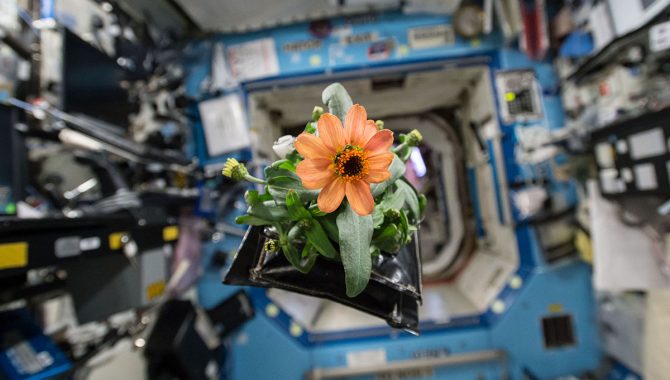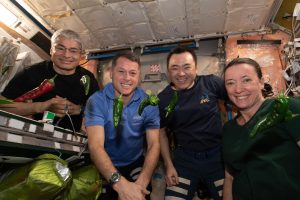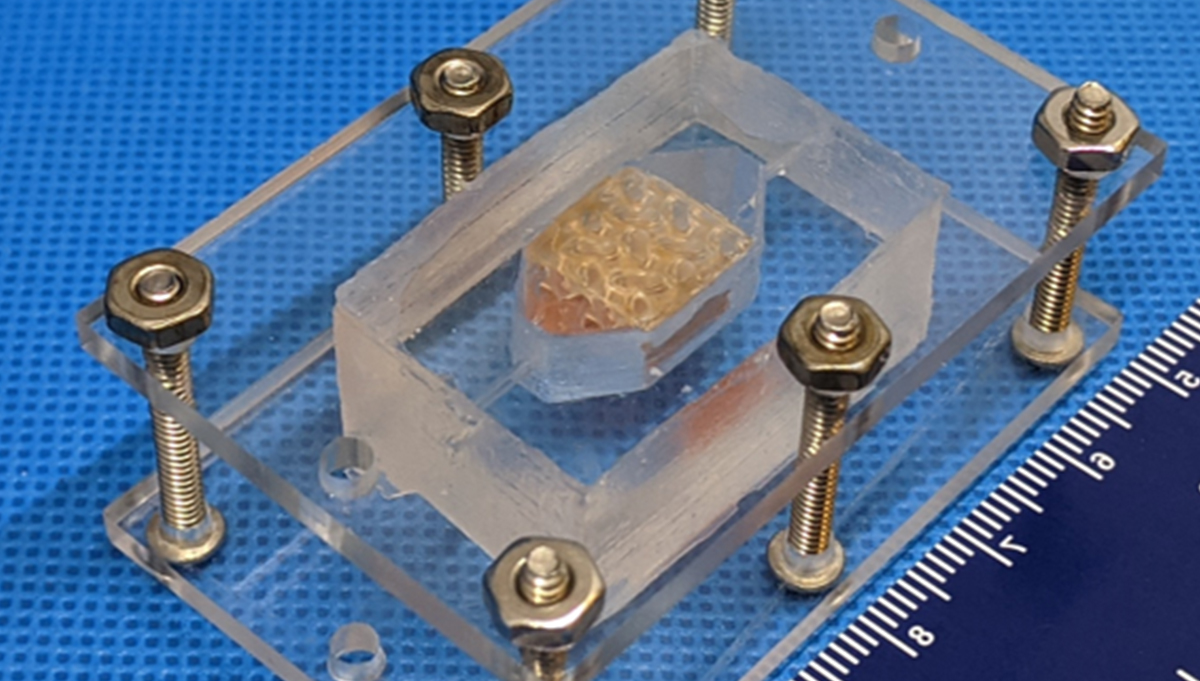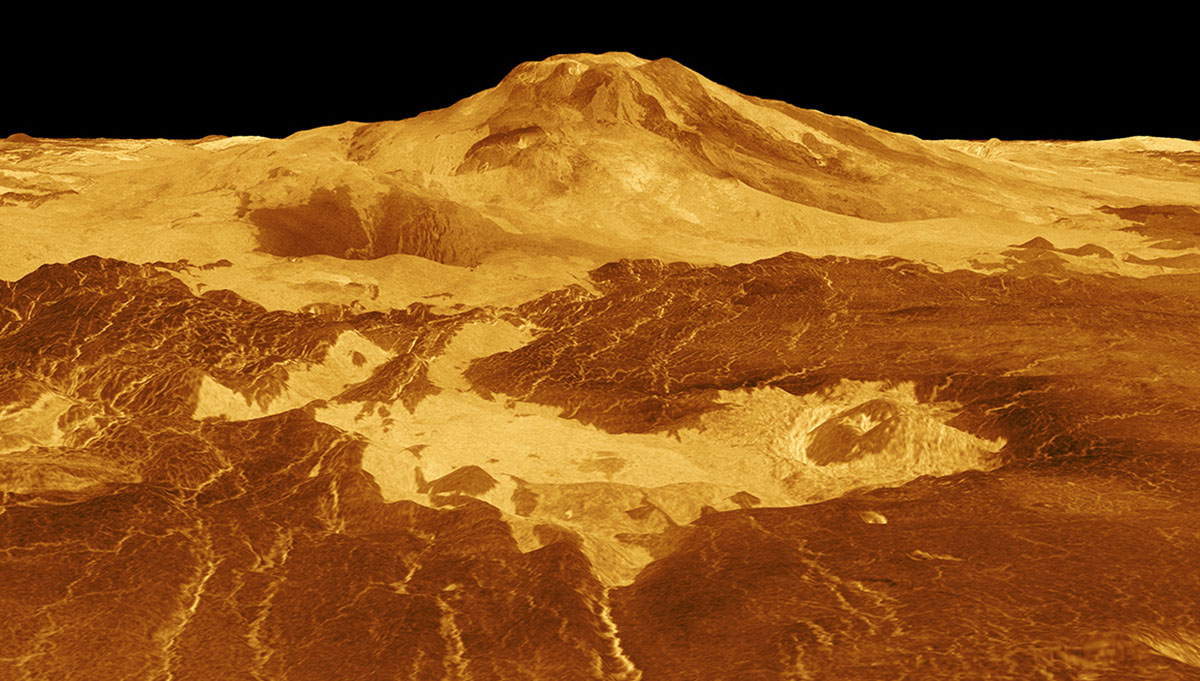
An orange zinnia floats in the International Space Station, part of a successful effort to grow flowers and lettuce in space. The project connects astronauts to home and augments their food supply.
Credit: NASA
Deep Space Food Challenge enters Phase 2 with demonstration projects.
One of the key challenges to establishing a long-term human presence at the Moon and an eventual human mission to Mars is how to feed a new generation of astronauts going farther from Earth than ever before for weeks, months or even years at a time. This challenge is made even more complex because food serves both physical and psychological needs.
Food has been an integral part of NASA space flights since 1962, when John H. Glenn, Jr. drank water, ate sugar tablets, and squeezed applesauce from a toothpaste-like tube in a nearly five-hour missions to demonstrate that humans could swallow and digest in space. During Gemini III, John W. Young and Virgil I. “Gus” Grissom shared part of a corned beef sandwich Young smuggled onto the capsule until crumbs from the rye bread began to float before them.

NASA astronauts Shannon Walker and Michael Hopkins collect leaf samples from plants growing inside the European Columbus laboratory for the Veg-03 experiment during Expedition 64.
Credits: NASA
NASA answered the challenge of providing nutritious, palatable, light-weight food by developing technology that greatly improved the process of freeze-drying, cutting reconstitution times in half and working effectively with cool water. This led to a line of palatable gravies that eventually evolved to include shrimp cocktail, fried rice, and fettuccine alfredo.
Today, astronauts aboard the International Space Station regularly receive supply shipments of fresh food and have grown eight types of leafy greens in the Vegetable Production System (Veggie) unit of the ISS, including red lettuce, Chinese cabbage, and Mizuna mustard.
Retired NASA astronaut Scott Kelly tended plants aboard the ISS when he spent nearly a year there from March 2015 to March 2016. The simple act of growing red lettuce and orange zinnia flowers in space had a powerful effect on Kelly and his fellow astronauts.
“I learned a lot about the challenges of growing plants in microgravity,” Kelly recalled in a NASA video. “Some of these plants were also used to supplement our diet of space food, as well as the fresh fruits and veggies from Earth. But, in addition to what these plants provided in terms of nutrition and research opportunities, caring for these plants boosted the moral and well-being of the crew. Growing, preparing, and eating good food makes you feel connected to home.”
“As we leave Low-Earth Orbit and journey further into space, our food systems will have to radically adapt to challenges greater than ever before, both during transit, [and] when we arrive on the surface of the Moon, and in time, when we visit Mars,” Kelly said.
NASA, partnering with the Canadian Space Agency (CSA), and the non-profit Methuselah Foundation, created the Deep Space Food Challenge to engage the broader scientific community, as well as students, chefs, small businesses and the general public in a crowdsourcing effort to develop “novel and game-changing food technologies or systems” that can provide safe, nutritious, and palatable food with minimal effort from the astronauts.
Phase 1 of the competition ended in November 2021, with 18 teams in the U.S. selected by NASA to receive $25,000 each for their submitted concepts. Winners took a variety of innovative approaches:
For instance, Interstellar Lab, Los Angeles, California, proposed “a modular bioregenerative system that produces fresh microgreens, vegetables, mushrooms, and insects.” Deep Space Entomoculture, Somerville, Massachusetts, proposed a self-contained device that uses insect cells to generate foods emulating traditional meat products. Hefvin, Bethesda, Maryland, proposed growing fruit cells in nutrient-rich media and then encapsulating those cells in edible berry structures, complete with skins and pulp.” Space Bread, Hawthorne, Florida, proposed a system that enables astronauts to easily bake fresh bread rolls in space. Click here to see all the winners.
Registration for Phase 2 closes on February 28, when winners from Phase 1, as well as new teams who register by the deadline, compete for a total of $1 million in prizes. In Phase 2, the teams will prove their concepts by designing, building, and demonstrating their technologies.

Expedition 66 flight engineers NASA astronauts Mark Vande Hei and Shane Kimbrough, JAXA (Japan Aerospace Exploration) astronaut Aki Hoshide, and NASA astronaut Megan McArthur aboard the International Space Station added some spice to their diets on Oct. 29, when they and ESA (European Space Agency) astronaut and Expedition 66 commander Thomas Pesquet sampled seven freshly harvested mild heat chile peppers.
Credit: NASA
The technologies the teams develop should be able to help support a crew of four astronauts on a hypothetical three-year spaceflight to and from Mars, producing the greatest amount of safe, nutritious, palatable food possible, with the least direct involvement by astronauts. NASA is also seeking technologies that will work on Earth as well as space, enhancing access to food in remote or economically disadvantage regions or following natural disasters.
“In my experience as a military pilot and astronaut, food brings us together as humans, and provides us comfort when we’re far from home,” said Pam Melroy, NASA Deputy Administrator. “It’s a perfect challenge to crowdsource because we can tap into the creativity of all of humanity on what is essentially, a deeply human problem. Today, we see massive food processing plants and factories that produce the food that gets delivered to our grocery stores. But shrinking that down to something that can fit on a rocket and still provide variety and palatability is of the utmost importance.”
Melroy said that the ultimate solution to the challenge of nourishing astronauts on the long journey to and from Mars will likely combine existing work NASA scientists are already doing with new approaches and technologies, such as those that the winning teams proposed during Phase 1 and will demonstrate during Phase 2.
“It’s going to take all of us working together to solve this challenge,” Melroy said.







![The sunshade deployed by the crew of Skylab 3 showing the folds Pilot Jack R. Lousma wrestled with in zero gravity.]](https://appel.nasa.gov/wp-content/uploads/2018/09/Skylab-3.jpg)

